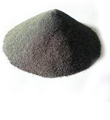Let's get back to the basics. The following carbide dies are used in a wide variety of industries to make everything from nuts and bolts to flutes and missiles. Tungsten
carbide dies and tooling have become a major part of modern manufacturing, utilizing the strength of tungsten carbide to form metals and other hard materials into a vast array of shapes, parts and products!
Tungsten Carbide Cold Forming Dies
Cold forming, or cold heading, starts with a cold metal slug placed into a die that is hit with a
 |
As Carbide Dies become more important,
you should know your carbide dies and tooling! |
heavy strike to shape it into its desired form. The force from the strike causes the metal to flow
into the desired shape inside the carbide die by exceeding the metal’s yield strength. Modern cold
forming is commonly used for rapidly forming metal parts such as screws, bolts and many other
fasteners.
Tungsten Carbide Drawing Dies
Drawing (Draw Dies) dies are typically used to shape wire, rod, bar, and tube. Commonly drawn materials include steel, aluminum, and copper.
Tungsten carbide has a high compression strength allowing it to handle extreme pressure; this
makes the material ideal for use in drawing dies. Most major manufacturers use carbide dies in
the drawing process. Drawn materials include mild steel, stainless steel and high carbon steel as
well as other steel alloys. Softer materials, like aluminum or brass, are frequently drawn
as well.
The wire drawing process involves drawing wire through a die to reduce the diameter of the wire
to the desired size while the volume remains the same. Wires are sized by
drawing them through a series of drawing dies, with each die having slightly smaller internal
diameter than the one preceding it to gradually reduce the width of the wire. The final die in the
series forms the wire to its target size.
Tube, or pipe, drawing dies are commonly round, hex or square, but can be made into any shape
desired by the manufacturer. The process of drawing tubing is similar to the wire drawing
process; however, a mandrel is used to form the inner dimensions of the tubing. The mandrel is
inside the tube, or pipe, and situated inside the die. As the tube is drawn through the die it is
being shaped on the inside by the mandrel, which establishes the wall thickness and inner
diameter. A properly formed mandrel will provide for a smooth surface on the inside of the tube or
pipe.
Bars and Rods are drawn in a similar fashion to wire however only they tend to be much thicker. A wide variety of metals are used in this application, including many steel and copper alloys. A cut-off
knife is used to size the rods and bars to length.
Carbide Extrusion Dies
Extrusion dies are typically used in a process where a slug is pushed through the die, forming the
desired cross sectional area. A mandrel is used in the process if the application is for tubing, or
pipes. Extrusion can be performed on a wide variety of materials and at various temperatures to
obtain the desired properties of the extruded product. Materials that can be formed with extrusion
dies include steel, copper, aluminum, tin, lead, nickel and even plastic. Products formed through
extrusion operations include pipe, wire, rods, bars, tubes, and welding electrodes.
For information about other types of carbide tooling, check out our comparison of
carbide bushings to steel bushings. For information about carbide die suppliers see our recomended
Carbide Dies suppliers page.

































